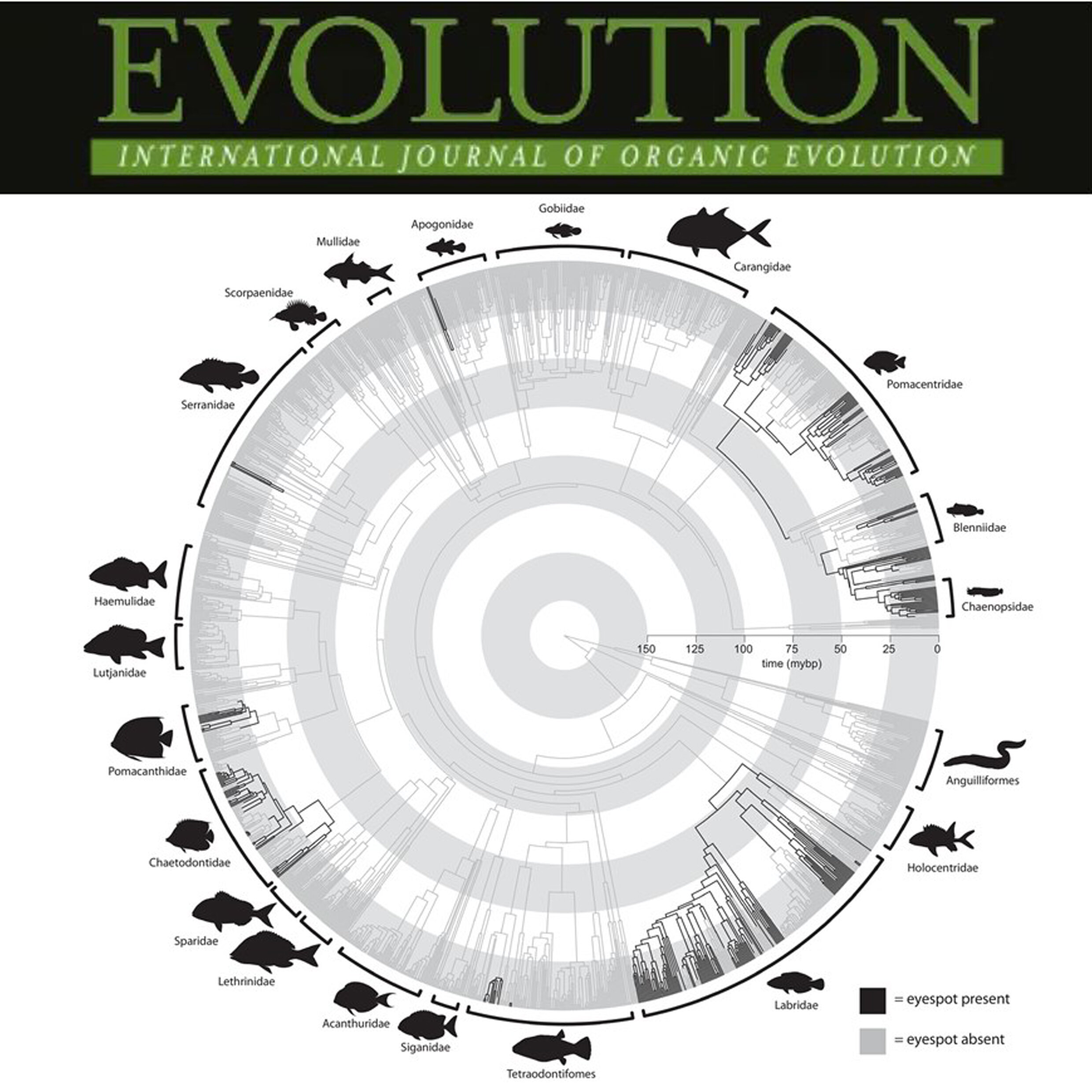Drivers of eyespot evolution in coral reef fishes
Authors: Christopher R. Hemingson, Alexandre C. Siqueira, Peter F. Cowman, David R. Bellwood
Abstract:
Evolution via natural selection has continually shaped the coloration of numerous organisms. One coloration of particular importance is the eyespot: a phylogenetically widespread, conspicuous marking that has been shown to effectively reduce predation, often through its resemblance to the eye. Although widely studied, most research has been experimental in nature. We approach eyespots using a comparative phylogenetic framework that is global in scope. Herein, we identify the potential drivers of eyespot evolution in coral reef fishes; essentially the rules that govern their appearance in this group of organisms. We surveyed 2664 reef fish species (42% of all described reef fish species) and found that eyespots are present in approximately one in every 10 species. Most eyespots occur in closely related species and have been present in some families for over 50 million years. Focusing on damselfishes (family: Pomacentridae) as a study group, we reveal that eyespots are rare in planktivorous species, which is likely driven by the predation risk associated with their feeding location. Using a heatmapping technique, we also show that the location of eyespots is fundamentally different in active fishes that swim above the benthos vs. cryptobenthic fishes that rest on the benthos. These location differences may reflect different functions of eyespots among reef fish species.

